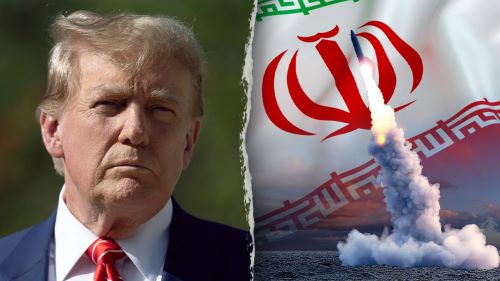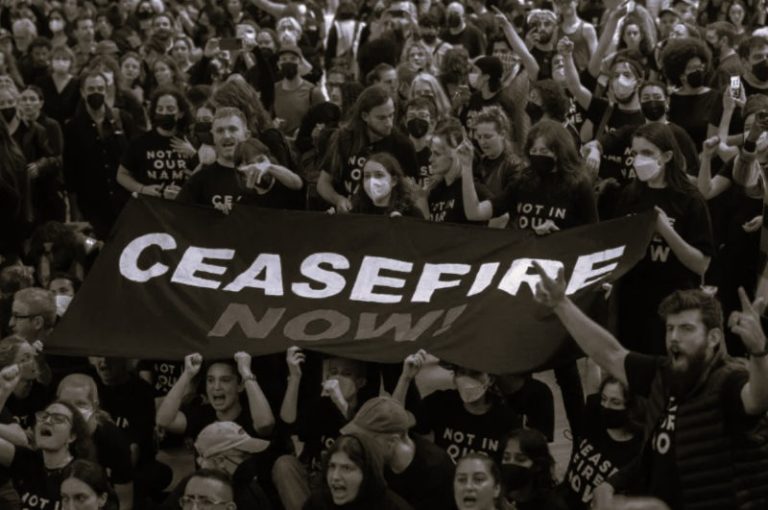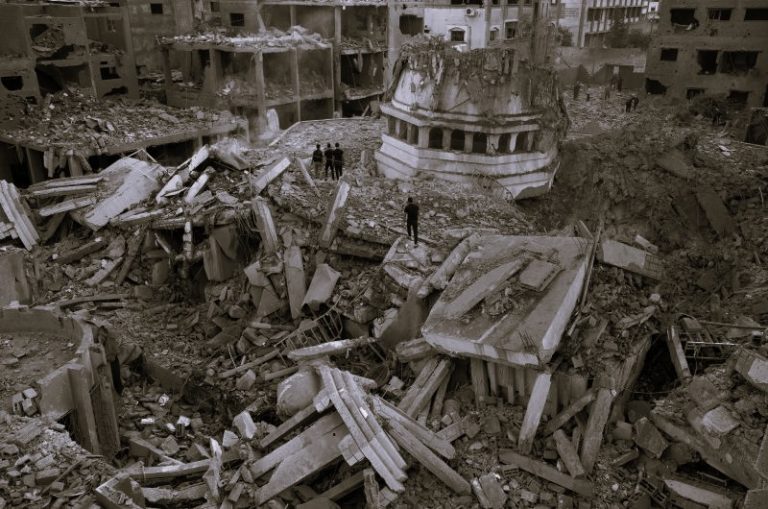

Trump’s declarations mark a return to the politics of brinkmanship.

By Matthew A. McIntosh
Public Historian
Brewminate
On June 17, 2025, former President Donald Trump ignited a wave of international concern by issuing a series of incendiary statements directed at Iran. In a post on Truth Social, he declared that Iran must submit to “UNCONDITIONAL SURRENDER,” an overt escalation that appeared to mark a turning point in U.S. posture amid the intensifying conflict between Israel and Iran. This pronouncement was followed by a chilling assertion: Trump claimed that U.S. intelligence had precisely located Iran’s Supreme Leader, Ayatollah Ali Khamenei, referring to him as “an easy target,” while simultaneously stating, “We have no intention to kill him… for now.” This not-so-veiled threat sparked immediate global anxiety over the potential for direct confrontation between the United States and Iran’s highest leadership.
Trump’s posts came in the context of Israel’s rapidly expanding military campaign against Iranian assets, which has included targeted airstrikes in Syria, Iraq, and most recently inside Iranian territory itself. The former president’s statements reflected a striking alignment with Israeli Prime Minister Benjamin Netanyahu’s aggressive stance, suggesting a renewed strategic partnership in military rather than diplomatic terms. In previous months, backchannel negotiations had taken place between the U.S. and Iran in neutral venues such as Oman and Rome, aimed at avoiding full-scale war. However, Trump’s rhetoric indicated that he had grown deeply skeptical of Iran’s sincerity in those discussions and had now shifted toward what appeared to be a doctrine of compelled capitulation.
Trump further claimed that the United States had achieved “complete and total control of the skies over Iran,” an assertion that, if accurate, would suggest not only deep U.S. involvement but also significant operational coordination with Israeli forces. This declaration may also be interpreted as a message to both allies and adversaries that the U.S. is prepared to escalate militarily if Iran fails to meet its demands. In response, military deployments in the region have increased dramatically. The Pentagon has already moved aircraft carriers, bomber wings, and refueling tankers into position across the Gulf and Eastern Mediterranean. Defense analysts have noted that such a posture could enable rapid strikes on strategic Iranian sites, including the highly fortified Fordow and Natanz nuclear facilities, both of which are central to Tehran’s atomic program.
Iran’s reaction has been one of measured defiance. In statements broadcast through state-run media, Iranian leaders rejected what they described as “bullying tactics,” insisting that they will not bow to intimidation. Ayatollah Khamenei reiterated Iran’s sovereign right to enrich uranium for peaceful purposes and refused to accept any conditions that would amount to national humiliation. The Iranian government also imposed domestic travel restrictions, advised citizens to avoid central urban areas such as Tehran and Karaj, and braced for the possibility of retaliatory strikes.
Within the United States, Trump’s remarks have stirred significant controversy. While some Republican lawmakers have supported his hardline stance, others—particularly members of the Senate Foreign Relations Committee—have called for restraint and questioned the legality of unilateral military action without Congressional approval. Senator Tim Kaine, among others, has introduced resolutions aimed at curbing the president’s war-making authority, warning that reckless rhetoric could trigger a regional conflagration. Internationally, leaders in Europe, including those from France, Germany, and the United Kingdom, have expressed concern over the escalating situation. Turkish and Qatari diplomats have reportedly offered to mediate, though prospects for immediate de-escalation appear dim.
Trump’s approach has drawn historical comparisons to the U.S. drone strike in January 2020 that killed General Qassem Soleimani, the commander of Iran’s Quds Force. That strike resulted in a direct Iranian missile barrage against U.S. bases in Iraq and led to a temporary suspension of diplomatic channels. Observers have noted that Trump appears to be reviving the same “maximum pressure” doctrine that defined much of his first term: a policy built on economic sanctions, military deterrence, and the threat of regime-level consequences.
The broader implications of this rhetoric are far-reaching. Trump’s demand for unconditional surrender harkens back to 20th-century wartime language, suggesting that he views the current standoff as a zero-sum game with no room for compromise. Yet the feasibility of such an outcome remains deeply questionable. Iran is unlikely to submit to external demands without resistance, and any attempt to decapitate its leadership or strike its nuclear facilities risks setting off a spiral of retaliation. Iranian missile and drone capabilities are significant, and the risk to U.S. personnel and allied shipping in the Persian Gulf is considerable.
The former president’s statements also raise legal and ethical concerns. The suggestion that the U.S. knows the precise whereabouts of a foreign head of state and could target him at will borders on a threat of extrajudicial assassination. While couched in vague terms, such a threat could violate international law, particularly if carried out without a declared war or United Nations authorization.
In the final analysis, Trump’s declarations mark a return to the politics of brinkmanship. Whether this posture is meant to pressure Iran into further concessions or lay the groundwork for kinetic conflict remains to be seen. But for now, the temperature in the region has risen sharply, and the world watches anxiously as one of the globe’s most volatile flashpoints threatens to ignite.
Originally published by Brewminate, 06.23.2025, under the terms of a Creative Commons Attribution-NonCommercial-NoDerivatives 4.0 International license.


